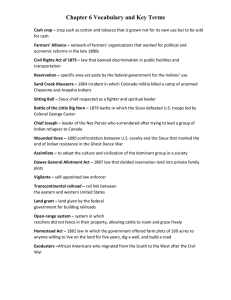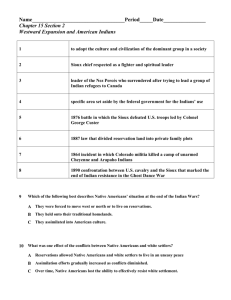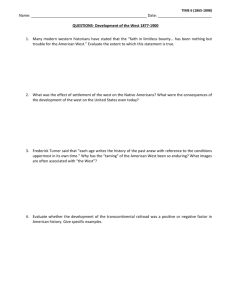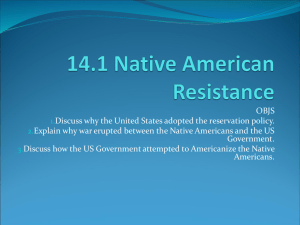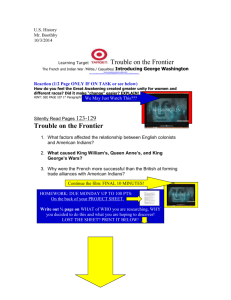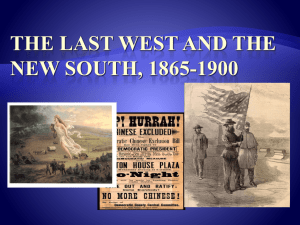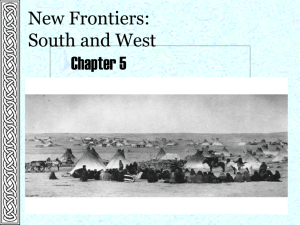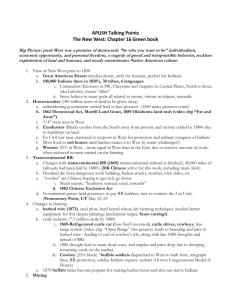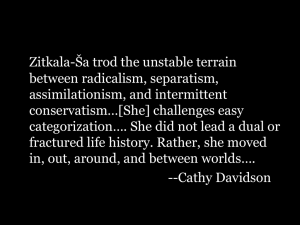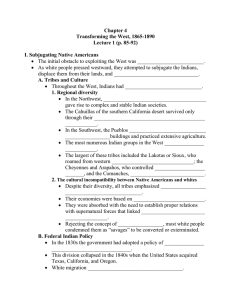Settling the Far West
advertisement
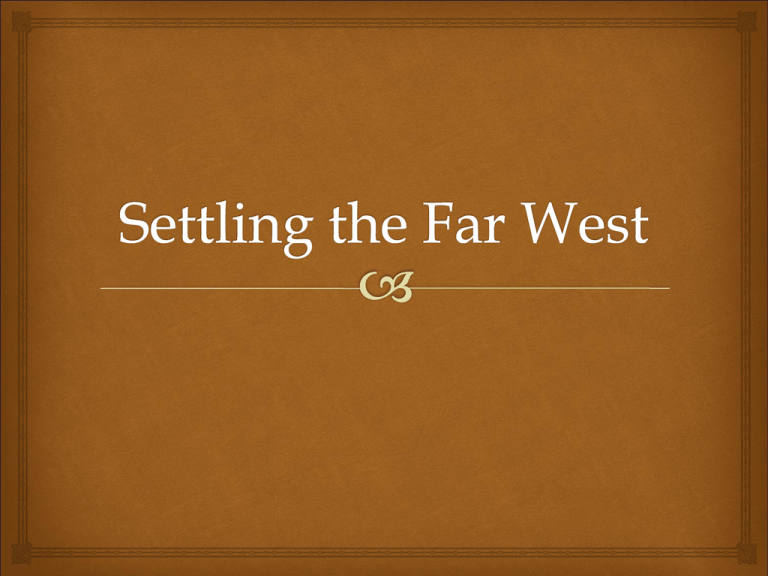
Two Visions of the West “Mythic West” vs. Pioneers & gunslingers Individualism, freedom, & opportunity “Tragic West” Greed, irresponsibility, exploitation Destroyed wildlife & nearly exterminated Native Americans Reasons for Moving West PUSH Factors Civil War Failure to achieve prosperity in the East Repression PULL Factors Railroad Land availability Natural resources The Transcontinental Railroad Civil War made transcontinental RR possible – Pacific Railroads Act (1862) A race between Union Pacific and Central Pacific ended in Promontory, Utah (1869) Chinese recruited for RR work were later subject to racism Chinese Exclusion Act (1882) due to resentment of white workers Diversity in the West Women in the West had greater equality within the family Large numbers of immigrants African American “Exodusters” fled post-Reconstruction discrimination and poverty “Buffalo soldiers” in the Indian Wars Mining Began with California Gold Rush in 1849 Comstock Lode (1873) generated vast wealth Permanent settlements resulted In late 1800s, mining turned commercial Great Sioux Wars Violations of Fort Laramie Treaty (1851) brought conflict Sand Creek Massacre (1864) and other violence led to new Indian policies Great Sioux Wars were the result of Custer’s expedition into Sioux hunting grounds Despite victory at Little Bighorn, Sioux eventually gave up and were moved to reservations Indian Resistance Ends “Tell your people that since the Great Father promised that we should never be removed, we have been moved five times… I think you had better put the Indians on wheels and you can run them around wherever you wish.” – Chief Spotted Tail of the Sioux “I am tired of fighting. Our chiefs are killed… The old men are dead… I want to have time to look for my children, and see how many of them I can find… Hear me, my chiefs! I am tired. My heart is sick and sad. From where the sun now stands I will fight no more forever.” – Chief Joseph of the Nez Perce Ghost Dance Movement Movement started by Wovoka in 1888 in order to see Indian lands returned When Lakota Sioux defied the ban on the Ghost Dance, this led to the Wounded Knee Massacre (1890) Decimation of the Buffalo Resulted from: Overhunting Climate change Competition for grasslands Disease Barbed wire Remaking Indian Policy “Many, if not most, of our Indian wars have had their origin in broken promises and acts of injustice on our part.” – Rutherford B. Hayes A Century of Dishonor (1881) brought attention to the Indians’ plight Dawes Severalty Act (1887) was central to the new policy of “Americanizing” Indians Homesteading Homestead Act (1862) and railroad land grants made farm land available for purchase Land is cheap, but life was hard – many claims abandoned New technologies played a significant role in conquering the West Small farmers who stayed struggled with indebtedness, leading to political movement through the Grange Cattle Drives Shortage of meat after the Civil War created opportunities Cowtowns emerged, but the boom was shortlived End of the Frontier 1890 census showed no end to consistent settlement, which prompted the issuance of Frederick Jackson Turner’s frontier thesis Turner believed that American character was shaped by the existence of new areas to conquer “Four centuries from the discovery of America, at the end of a hundred years under the Constitution, the frontier has gone and with its going has closed the first period of American history.” – Frederick Jackson Turner
